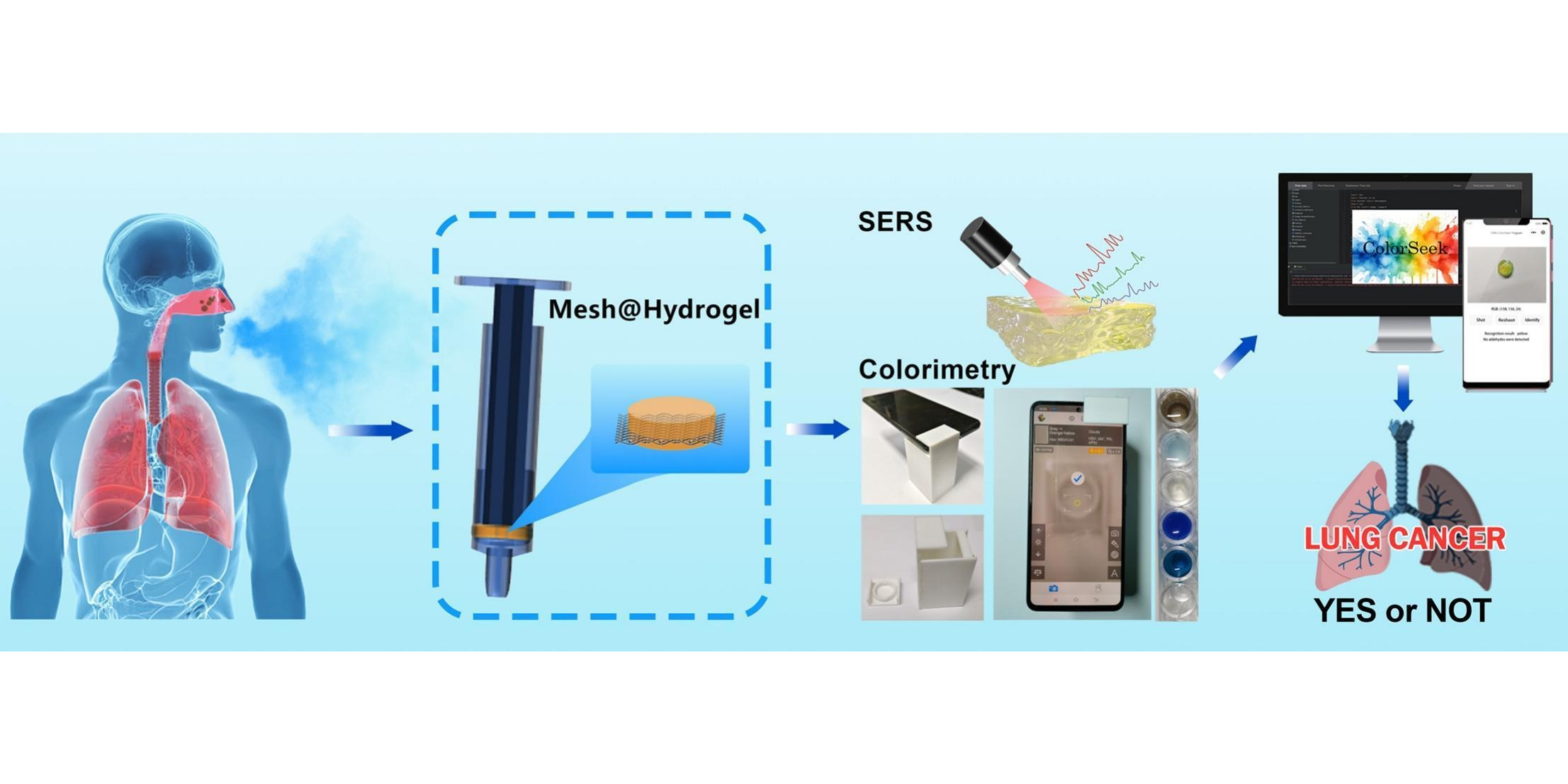
NCBJ scientists’ invention enables detecting lung cancer through breath
20-10-2025
Lung cancer is often diagnosed a tan advanced stage, when treatment options are limited and survival rates are low. In a major advance, scientists from the NOMATEN CoE at NCBJ, working with researchers from China and WUT, have developed a biosensor capable of detecting hexanal, which can serve as a reliable biomarker of early-stage lung cancer.
Early and accurate detection of lung cancer remains a critical challenge in clinical oncology. Given its non-specific symptoms in the initial stage, it is often diagnosed at an advanced stage, where therapeutic options are limited. Current diagnostic methods, such as chest X-rays and tomography improve the chances, a more reliable method is needed, dedicated to detecting early-stage lung cancer.
One of the promising methods currently undergoing rapid development is breathomics, through the analysis of volatile organic compounds (VOCs) in exhaled air. These compounds show great potential as biomarkers, as their occurrence varies significantly between healthy individuals and oncologic patients. Of particular interest is hexanal, a type of aldehyde whose level is significantly increased in the breath of lung cancer patients. However, the precise detection of this compound at low concentrations remains a major challenge.
The team of researchers, including Dr. Amil Aligayev from the NOMATEN CoE at National Centre of Nuclear Research, together with scientists from China and Warsaw University of Technology, created a flexible hydrogel patch that combines two complementary detection techniques: surface-enhanced Raman scattering (SERS) and colorimetric sensing. The patch incorporates silver nanocubes coated with cobalt-nickel (Co-Ni) layered double hydroxide (LDH) (AgNCs@Co-Ni LDH) and the chemical probe MBTH, embedded within an agarose hydrogel. When exposed to hexanal, the patch not only produces a strong Raman signal but also develops a distinct blue color, enabling detection both with sensitive instruments and by the naked eye.
The tests conducted on manufactured biosensors showed remarkable performance gains. The SERS method achieved an ultralow detection limit of 3.34 × 10⁻13 M, among the most sensitive ever reported for hexanal, whereas the colorimetric mode allowed naked-eye recognition and smartphone-based quantification with detection down to 10⁻¹¹ M - says Dr. Amil Aligayev from NOMATEN CoE at NCBJ. The hydrogel patch demonstrated high selectivity, reproducibility, long-term stability, and antibacterial activity, making it robust for practical applications. To demonstrate real-world feasibility, the researchers integrated the hydrogel patches into wearable formats, including face masks and mesh-based devices. Testing with breath samples from 20 lung cancer patients and 20 healthy individuals revealed clear distinctions between the groups in both SERS signals and color changes. - This dual-mode approach not only enables sensitive and selective detection of lung cancer biomarkers, but also paves the way for practical, non-invasive, and low-cost early screening tools - adds Mr. Jialin Li from Southeast University in China.
To enhance accessibility, the team also developed ColorSeek, a deep learning-based recognition system that can analyze patch color changes in real time on smartphones or PCs. This compact convolutional neural network (CNN) achieved over 95% accuracy, supporting portable, AI-driven, and user-friendly diagnostics.
The findings were published in the Chemical Engineering Journal under the title: “Dual-mode SERS and colorimetric sensor for lung cancer VOC-biomarker detection using hydrogel patches” (https://doi.org/10.1016/j.cej.2025.168343).





